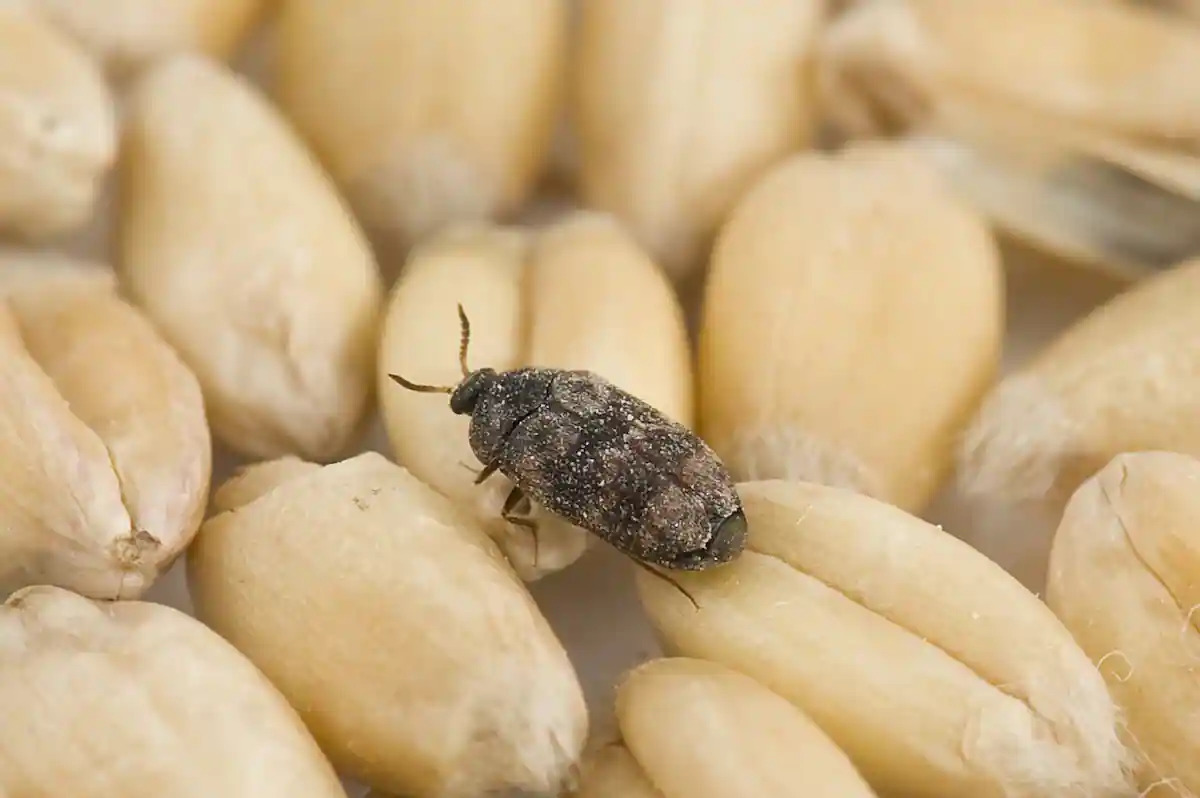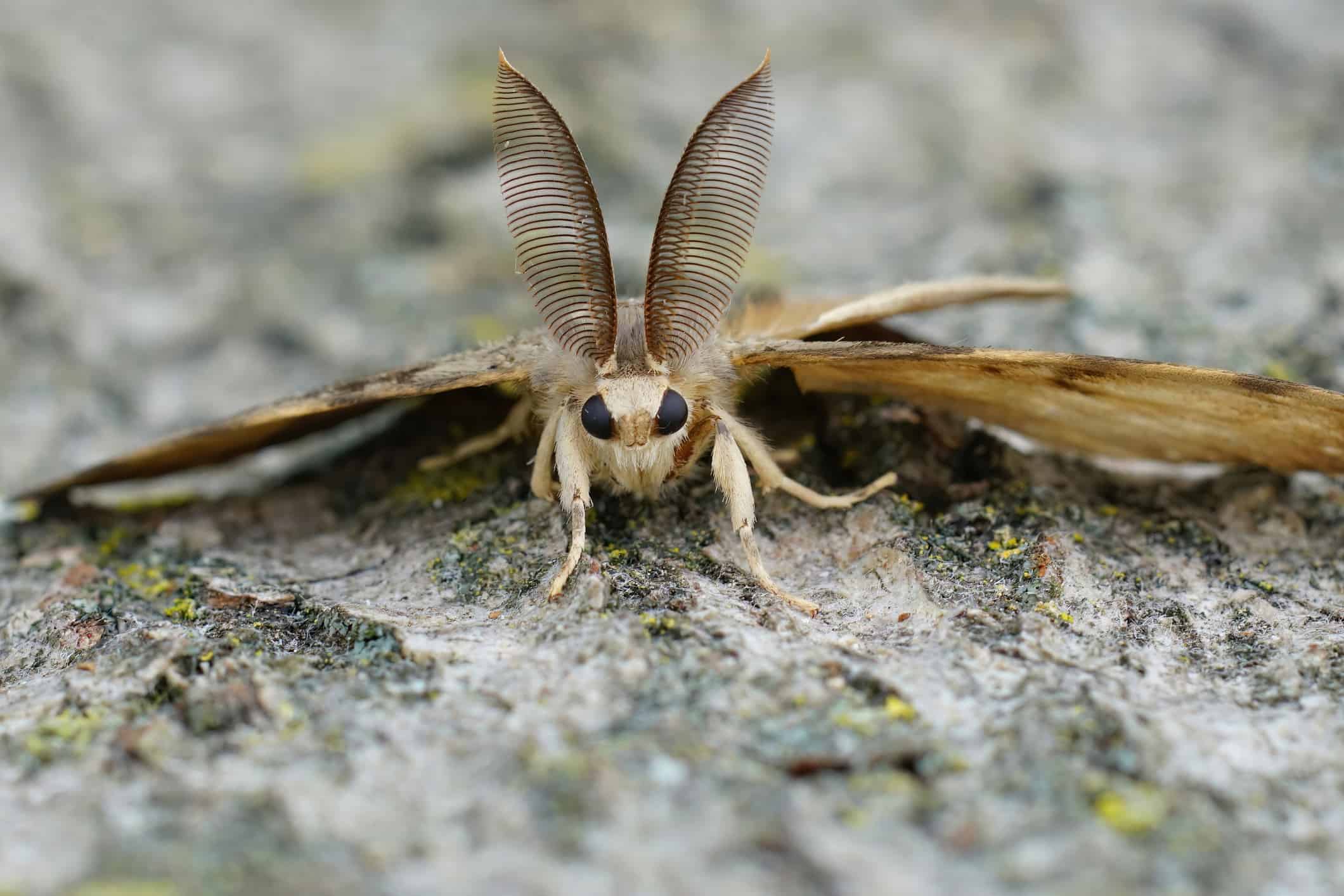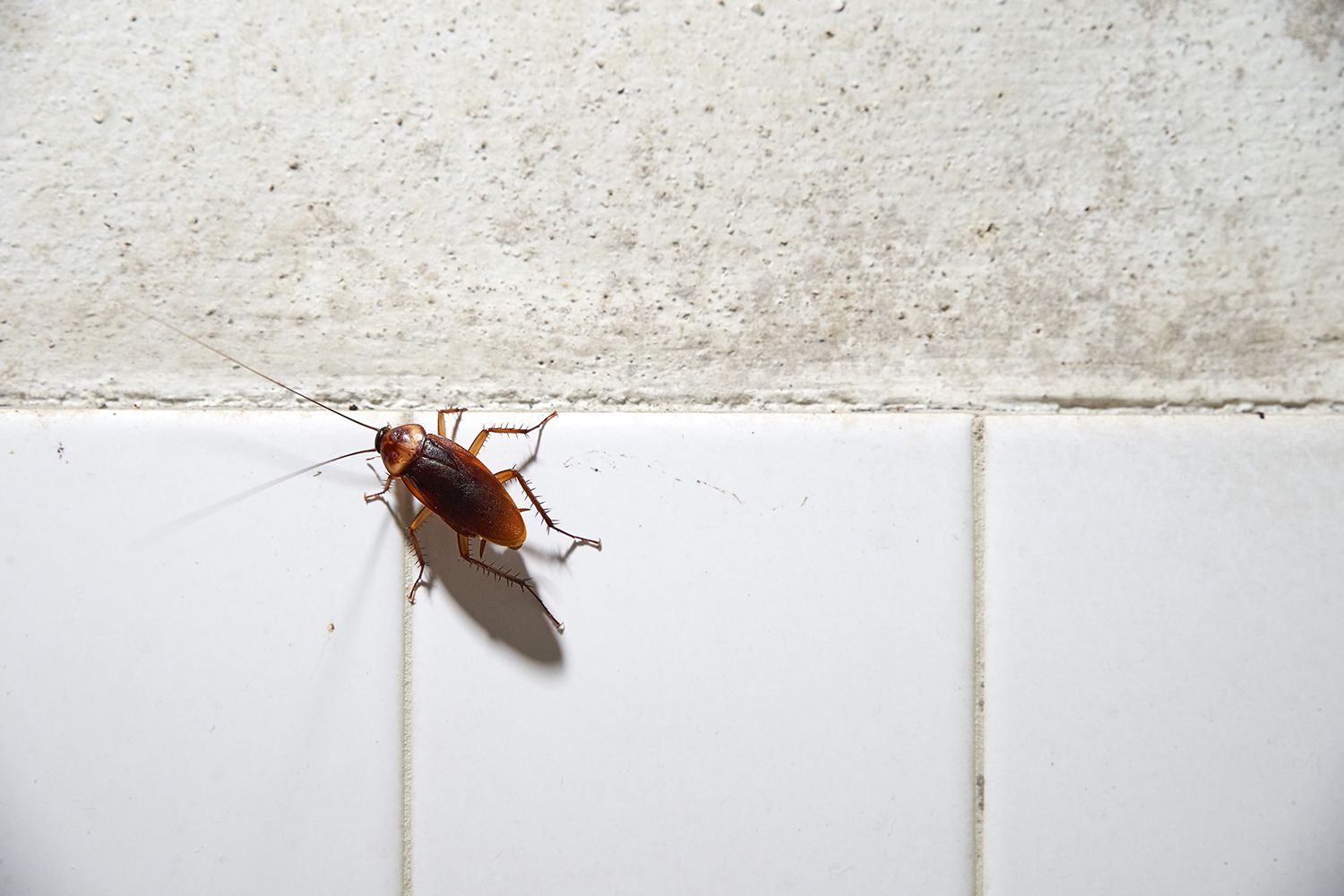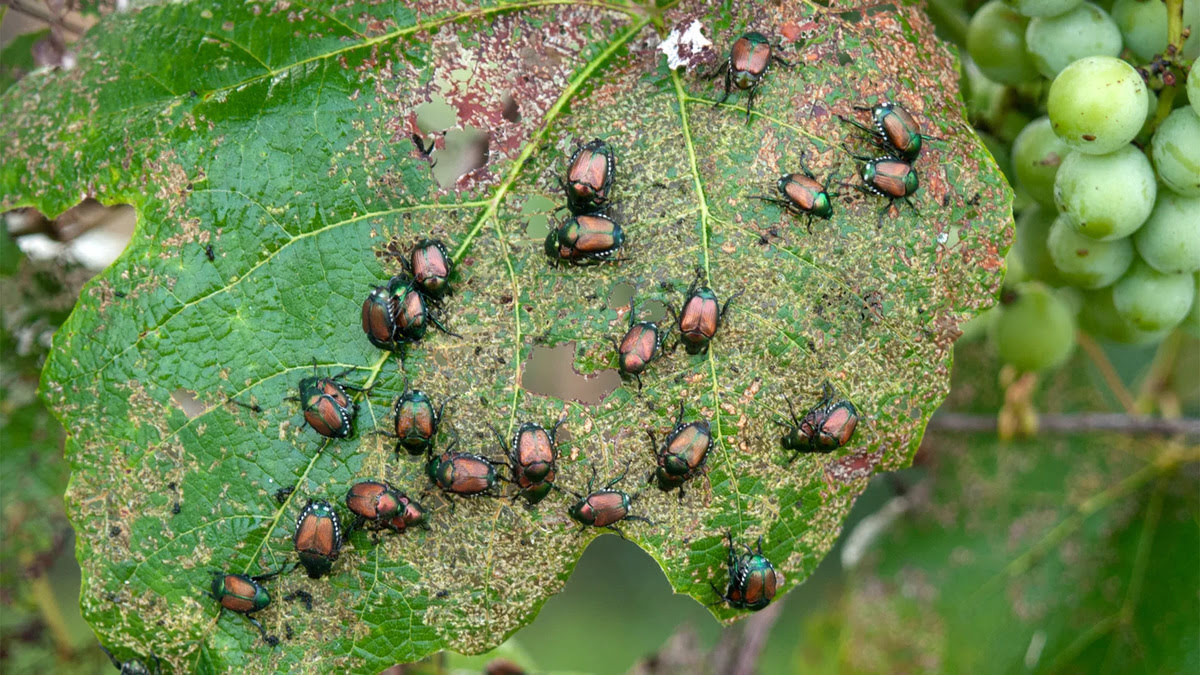Home>Gardening Tips and Tricks>Problem Solving>How To Preserve Wheat From Insects


Problem Solving
How To Preserve Wheat From Insects
Modified: January 22, 2024
Learn effective ways of solving the problem of preserving wheat from insects with our step-by-step guide. Preserve your crops and ensure their quality with our expert tips.
(Many of the links in this article redirect to a specific reviewed product. Your purchase of these products through affiliate links helps to generate commission for Chicagolandgardening.com, at no extra cost. Learn more)
Table of Contents
Introduction
Wheat is a staple crop grown around the world, providing a vital source of nutrition and sustenance for millions of people. However, one of the biggest challenges in preserving wheat is protecting it from insect infestations. Insects can cause significant damage to stored wheat, compromising its quality and making it unfit for consumption.
Preserving wheat from insects requires a comprehensive approach that includes proper preparation, preventive measures, and storage techniques. This article will guide you through the process of preserving wheat from insects, covering natural methods of prevention as well as the use of chemical treatments. We will also discuss effective storage techniques and ways to monitor and prevent re-infestation.
By following the tips and techniques outlined in this article, you can ensure that your stored wheat remains insect-free and maintains its nutritional value for an extended period of time. Whether you are a farmer, a home gardener, or simply someone who wants to preserve their wheat supply, the information provided here will help you achieve successful insect control and preservation.
Understanding Wheat Insects
Before delving into the preservation methods, it is essential to have a basic understanding of the types of insects that commonly infest wheat. The two primary groups of wheat insects are stored grain insects and field insects.
Stored grain insects are typically small beetles, moths, or weevils that infest wheat during storage. They can be categorized into primary and secondary pests. Primary pests, such as the red flour beetle and the Indian meal moth, directly feed on the grain. Secondary pests, including the sawtoothed grain beetle and the merchant grain beetle, feed on damaged kernels or broken bits, thereby increasing the risk of infestation.
Field insects, on the other hand, attack wheat during the growing stage in the field. Common examples of field insects that may infest wheat include aphids, grasshoppers, and armyworms. These insects can cause substantial damage to the crop before it is even harvested.
Understanding the lifecycle and behavior of these insects is crucial for effective preservation. Insects have different temperature and humidity requirements for breeding and survival. By disrupting these conditions, we can significantly reduce their infestation potential.
It’s important to note that while storing wheat, it may already contain insect eggs or larvae. These tiny insect eggs are often dormant and can hatch once the right conditions are met. Therefore, proper storage practices are essential to prevent the insects from multiplying and causing damage to the stored wheat.
In the next sections, we will explore various methods to prepare wheat for preservation, including natural preventive measures and chemical treatments. These strategies will help minimize the risk of insect infestation and ensure the long-term preservation of your wheat supply.
Preparing Wheat for Preservation
Before preserving your wheat, it is essential to take certain steps to ensure its quality and longevity. Proper preparation will not only help eliminate existing insects or eggs but also create an environment that discourages future infestations.
The first step in preparing wheat for preservation is to thoroughly clean it. Remove any foreign materials such as dirt, dust, and other debris that may have accumulated during harvesting and storage. This can be done by sieving the wheat or using a grain cleaner machine.
Next, inspect the wheat for signs of insect infestation. Look for live insects, dead insects, or any indication of their presence, such as webbing or frass (insect excrement). If you find signs of infestation, consider treating the wheat with appropriate measures, which will be discussed in later sections.
Once the wheat has been cleaned and inspected, it is recommended to condition it before storage. Conditioning involves allowing the wheat to reach its optimal moisture content, which is typically around 12-14%. The moisture content of the wheat has a significant impact on insect activity. If the wheat is too moist, it can promote mold growth and create a favorable environment for insects. If it is too dry, the wheat can become prone to cracking or forming dust, which may attract insects. Use a moisture meter to determine and adjust the moisture content as needed.
In addition to conditioning, you can also consider treating the wheat with diatomaceous earth (DE). DE is a natural, non-toxic powder made from the fossilized remains of diatoms. It acts as a physical insecticide by absorbing the waxy outer layer of insects, causing dehydration and death. Simply mix a small amount of DE with the wheat and ensure even coverage.
Finally, it is crucial to store the wheat in suitable containers. Choose airtight containers that are resistant to pests, such as metal or food-grade plastic bins with tight-fitting lids. Avoid using bags or sacks that insects can easily penetrate. Label the containers with the storage date and ensure they are kept in a cool, dry, and well-ventilated area.
By following these preparatory steps, you can ensure that your wheat is ready for long-term preservation. In the next sections, we will explore natural preventive measures and chemical treatments that can be used to further protect your wheat from insect infestation.
Natural Methods of Insect Prevention
When it comes to preserving wheat from insects, natural preventive measures can be highly effective and environmentally friendly. These methods help deter insects from infesting stored wheat without the need for chemical treatments. Here are some natural strategies you can implement:
- Clean and dry storage area: Before storing your wheat, ensure the storage area is clean and free from any debris or spilled grains. Insects are attracted to leftover food sources, so maintaining good sanitation is crucial. Additionally, make sure the storage area is well-ventilated and dry, as excess moisture encourages insect activity.
- Proper container selection: Choose airtight containers that will prevent insect entry. Metal or food-grade plastic bins with tight-fitting lids are ideal. Avoid using bags or sacks, as they are easily penetrated by insects.
- Temperature control: Insects thrive in warmer temperatures, so try to store your wheat in cool areas. Keeping the storage temperature below 60°F (15°C) helps minimize insect activity.
- Spot treatment: Inspect your stored wheat regularly and conduct spot treatments if you find any signs of infestation. Remove and destroy infested grain to prevent further spread. You can also apply natural repellents such as bay leaves, garlic, or peppermint oil to deter insects.
- Hermetic storage: Consider using hermetic storage methods, which utilize airtight containers or bags to create an oxygen-deprived environment. This suffocates insects and prevents their reproduction. Hermetic storage is particularly effective for long-term preservation and is widely used to protect grains.
Implementing these natural preventive measures can significantly reduce the risk of insect infestation in your stored wheat. However, it is important to monitor your wheat regularly to ensure that no infestation occurs. In the following sections, we will explore chemical treatments that can be used as additional measures to protect your wheat from insects when necessary.
Using Chemical Treatments
When natural preventive measures are not sufficient or when you are dealing with a severe infestation, chemical treatments can be employed to protect your wheat from insects. However, it is important to use these treatments responsibly and follow safety guidelines. Here are some commonly used chemical treatments:
- Insecticides: Insecticides are chemical substances specifically designed to kill insects. They can be applied directly to the wheat or used as residual sprays in the storage area. It is crucial to choose insecticides that are approved for use on stored grains and follow the manufacturer’s instructions for application and safety precautions.
- Fumigation: Fumigation involves the use of gaseous pesticides to eliminate insects. It is particularly effective for controlling hard-to-reach insects or those hidden in crevices. Fumigants such as phosphine or methyl bromide are commonly used for grain fumigation. It is important to follow proper fumigation protocols and safety measures to protect yourself and the environment.
- Grain protectants: Grain protectants are chemicals that are applied directly to the wheat to prevent insect infestations. These treatments provide long-lasting protection against pests and can be effective for several months or even years. Common grain protectants include malathion, permethrin, and diatomaceous earth. Follow the instructions provided by the manufacturer for proper application and safety precautions.
- Integrated Pest Management (IPM): IPM combines multiple strategies, including both natural and chemical methods, to manage pests effectively. It focuses on minimizing the use of chemicals and emphasizes the use of cultural practices, biological control agents, and monitoring systems. Implementing an IPM approach can help reduce the reliance on chemical treatments while still effectively controlling insect infestations.
Before using any chemical treatment, it is important to consult with an expert or local agricultural authorities to ensure you are using the right product and following the recommended dosage and safety guidelines. Additionally, be aware of any regulations pertaining to the use of chemical treatments in your area.
While chemical treatments can be effective in controlling insect infestations, it is essential to use them as a last resort and in combination with other preventive measures. Regular monitoring and preventive practices can help reduce the need for chemical treatments and minimize the risk to human health and the environment.
In the next sections, we will explore storage techniques and ways to monitor and prevent re-infestation to ensure the long-term preservation of your wheat.
Storage Techniques for Preserved Wheat
Proper storage techniques play a vital role in preserving wheat and protecting it from insect infestations. Implementing the following storage practices will help maintain the quality and longevity of your stored wheat:
- Airtight containers: Store your wheat in airtight containers to prevent insect entry. Metal or food-grade plastic bins with tight-fitting lids are ideal options. Ensure that there are no gaps or openings where insects can infiltrate.
- Temperature control: Maintain a cool storage environment for your wheat. Insects are more active and reproduce faster in warmer temperatures. Aim to keep the storage temperature below 60°F (15°C) to discourage insect activity.
- Dry storage: Moisture is a breeding ground for pests and can lead to mold growth in stored wheat. Ensure that your storage area is dry, and the moisture content of the wheat is properly controlled (ideally around 12-14%). Use moisture meters to monitor the moisture levels and take appropriate measures to adjust if necessary.
- Regular inspection: Regularly inspect your stored wheat for signs of infestation. Look for live insects, dead insects, webs, or frass. If you notice any indications of insect presence, take immediate action to prevent their spread.
- Rotation: Implement a rotation system where older wheat is used first. This ensures that your wheat is consumed within a certain timeframe, minimizing the risk of prolonged storage and potential infestation.
- Proper labeling: Clearly label your storage containers with the storage date. This helps in tracking the age of the wheat and ensuring that older batches are used first.
By following these storage techniques, you can create an environment that is inhospitable to insects and protect your wheat from infestation. However, it is important to remain vigilant and regularly monitor your stored wheat for any signs of pest activity or deterioration.
In the next section, we will discuss monitoring methods and ways to prevent re-infestation, which are crucial in ensuring the long-term preservation of your wheat.
Monitoring and Preventing Re-infestation
Even after taking all the necessary precautions and implementing proper storage techniques, it is important to regularly monitor your stored wheat to detect any signs of insect activity or re-infestation. Here are some effective methods for monitoring and preventing re-infestation:
- Visual inspections: Conduct regular visual inspections of your stored wheat. Look for any live insects, dead insects, webbing, or frass. Pay close attention to corners, crevices, and areas prone to moisture accumulation.
- Trap placement: Set up traps specifically designed to attract and capture insects. These traps can help monitor the presence and activity of pests. There are various types of traps available, including pheromone traps and sticky traps, which can be effective in detecting and capturing specific insects.
- Temperature monitoring: Use temperature monitoring devices such as digital thermometers or temperature probes to track the storage temperature of your wheat. Sudden increases in temperature can indicate insect activity, as insects generate heat as they feed and reproduce.
- Proper hygiene: Maintaining cleanliness in your storage area is crucial for preventing re-infestation. Regularly clean the storage containers, removing any spilled grains or debris that could attract insects. Consider vacuuming or sweeping the storage area to eliminate any potential hiding places for pests.
- Rotate and consume: Utilize a first-in, first-out system to ensure that older batches of wheat are used first. This minimizes the chances of prolonged storage and reduces the risk of infestation. Regularly rotate your wheat supply and avoid hoarding excess stocks.
- Sealing gaps and cracks: Inspect your storage containers for any gaps or cracks that could serve as entry points for insects. Seal these openings using caulk or appropriate methods to prevent pest infiltration.
By diligently monitoring your stored wheat and promptly taking action if any signs of infestation are detected, you can prevent the re-infestation and ensure the long-term preservation of your wheat supply.
Remember, prevention is key when it comes to preserving wheat from insects. By implementing proper storage techniques, regular monitoring, and preventive measures, you can safeguard your wheat from pests and maintain its quality for an extended period of time.
In the following section, we will wrap up the article with a brief summary of the key points discussed.
Conclusion
Preserving wheat from insects is essential to ensure the quality and longevity of your stored supply. By understanding the types of wheat insects and implementing proper preservation methods, you can protect your wheat from infestation and maintain its nutritional value.
Preparing wheat for preservation involves cleaning, inspecting, and conditioning the grains before storage. Natural preventive measures such as maintaining a clean and dry storage area, using airtight containers, and controlling temperature can be highly effective in deterring insects from infesting the stored wheat. Additionally, implementing natural repellents or opting for hermetic storage techniques can provide further protection.
If natural preventive measures are inadequate or in the case of severe infestations, chemical treatments such as insecticides, fumigation, or grain protectants can be used. However, it is important to follow safety guidelines and use these treatments responsibly.
Proper storage techniques, including using airtight containers, maintaining a cool and dry environment, regular inspection, and rotation, play a crucial role in preserving wheat and preventing insect re-infestation. Monitoring methods such as visual inspections, trap placement, and temperature monitoring can help detect any signs of pest activity, while practicing good hygiene and sealing gaps can further minimize the risk of infestation.
By incorporating these strategies into your wheat preservation routine, you can successfully protect your stored wheat from insects and ensure its long-term preservation. Remember to regularly monitor your stored wheat and take prompt action if any signs of infestation are detected.
Preserving wheat from insects requires a proactive and comprehensive approach. By combining proper preparation, natural preventive measures, suitable storage techniques, and diligent monitoring, you can safeguard your wheat supply and have peace of mind knowing that your stored grains are protected from harmful pests.










